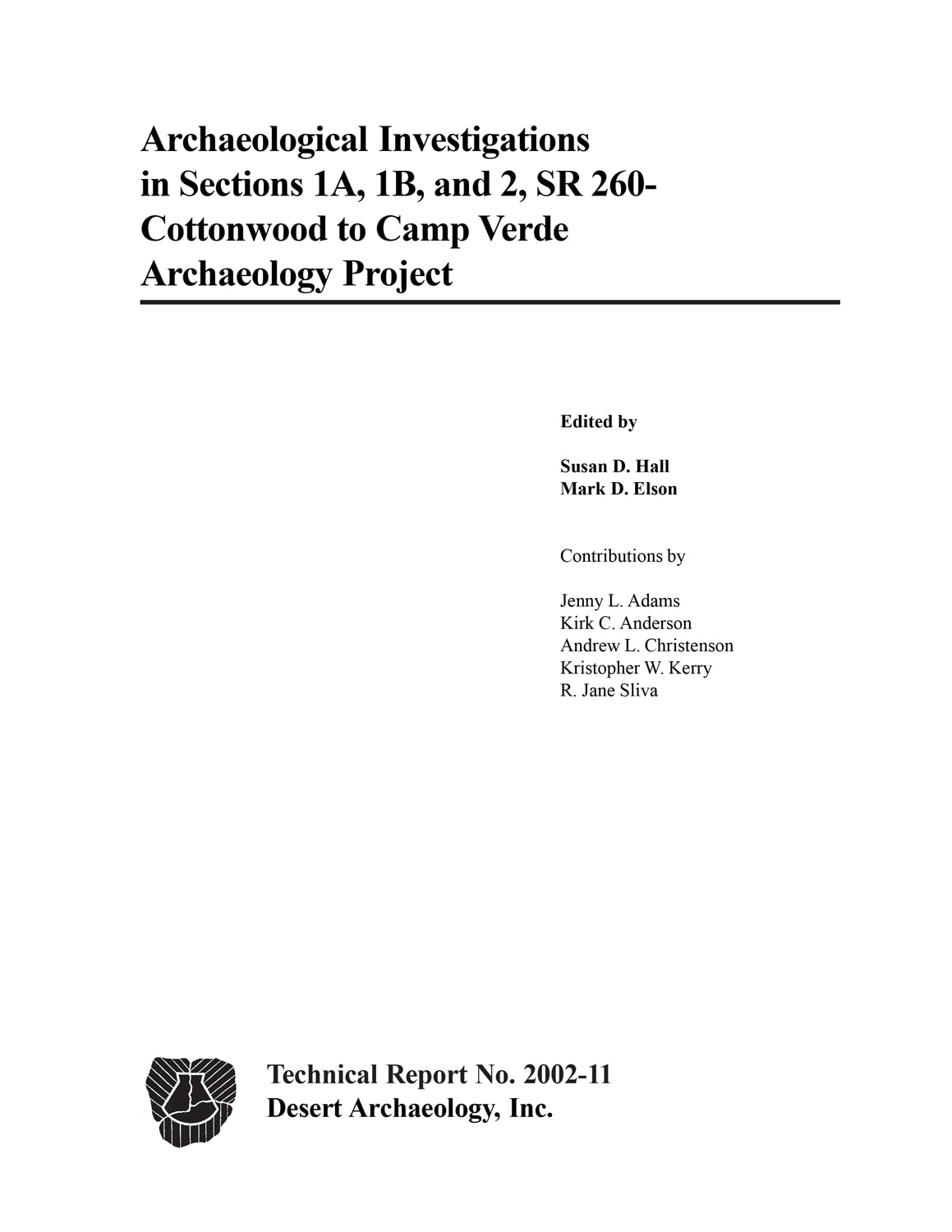Description
Archaeological Investigations in Sections 1A, 1B, and 2, SR 260-Cottonwood to Camp Verde Archaeology Project (TR2002-11) (PDF)
Four archaeological sites were investigated in advance of road realignment and improvements along State Route 260, between Cottonwood and Camp Verde, Yavapai County, Arizona. The work was done at the request of the Arizona Department of Transportation, as part of a larger project. Two sites were located in Segment 1A (AZ O:5:173 (ASM)/AR-03-09-05-378) and Segment 1B (AZ O:5:143 (ASM)/AR-03-09-05-249) on land administered by the Prescott National Forest. The other two sites (AZ O:5:131 (ASM)/AR-03-04-01-1003 and AZ O:5:133 (ASM)/AR-03-04-01-1004) were in Segment 2, on land administered by the Coconino National Forest. Construction in Segment 3, extending southeast from Segment 2 to West Clear Creek, has not currently been scheduled. No subsurface cultural remains were found at any of the sites, although one site (O:5:133/AR-03-04-01-1004) was severely disturbed inside the right-of-way, and remains may still be present in the portion of the site outside the right-of-way.
Site O:5:131/AR-03-04-01-1003 appears to have functioned as a locus for limited prehistoric activity, perhaps serving as a temporary camp or resource procurement locale. The site was contemporaneous with O:5:133/AR-03-04-01-1004, located nearby, to the west. Both sites may have been related to another nearby site that contained a single-room masonry structure. Located very close to the Verde River, all three sites were likely part of a small habitation or fieldhouse complex. Although very little datable material was collected at sites O:5:131/AR-03-04-01-1003 and O:5:133/AR-03-04-01-1004, the ceramics fell between A.D. 1050 and 1300. The presence of a few Historic period artifacts indicates transitory use of the site area between approximately 1875 and 1917. Although no datable artifacts were found at O:5:143/AR-03-09-05-249, site characteristics were very similar to site O:5:173/AR-03-09-05-378, where Middle and Late Archaic projectile points were collected. Both sites were large, low density lithic scatters, which were most likely resource procurement and/or manufacturing locales.
